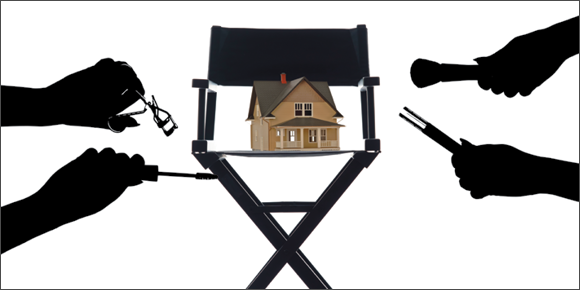How CRSs can make sure their listings have curb appeal—and convince their sellers that it’s worth the investment.
By Gayle Bennett
What our mothers told us about what’s on the inside mattering more than what’s on the outside doesn’t hold true in real estate.
Homes with an exterior that doesn’t look well-tended are likely limiting the number of potential buyers that will even take a look inside. These homes are lacking curb appeal, and they will probably sit on the market longer and sell for a lower price than similar homes with exteriors that look in top shape.
“That first impression is critically important,” explains Faye O’Bryant, CRS, with the RE/MAX Equity Group in the Portland, Oregon, area.“If it looks like a rattletrap, people are going to bypass it and say, ‘No, that’s not how I see my life.’”
And while it’s still called “curb” appeal, these days that first look is often occurring on a computer, tablet or smartphone screen—and that’s making it even more important. “When the pictures are taken, you can tell the houses that look nice,” says Charisma Marin, CRS, with Charisma Property Group in Orlando, Florida. “And if the pictures don’t look nice, then nobody wants to come see the house. Pictures sell homes.”
Boosting curb appeal doesn’t have to break the bank—a little landscaping and cleaning can go a long way toward putting a house on buyers’ must-see lists. CRSs offer their thoughts on how to get the exterior looking its best, and how to convince sellers that the time and money is worthwhile.
What Matters Most
Assuming a house isn’t a top-to-bottom fixer-upper that is being marketed as such, almost every home can use a little exterior sprucing before hitting the market. Here are the top tasks expert CRSs want to see a seller invest in before they book the photographer and list a home.
Landscape the yard. Book a landscaper to make the yard as neat and attractive as possible. “Often, there’s overgrowth that’s covering the front door,” says Kitty Taylor, CRS, with Grayton Coast Properties in Santa Rosa Beach, Florida.“You want to make sure that as you drive in, you can see the front door.”
Depending on the season and geographic location, landscapers can also plant some annuals to add a pop of color. Adding fresh mulch gives a yard definition and provides a nice contrast for the flowering plants or annuals.
“If the yard is well-kept with fresh mulch, that makes the buyer think, ‘They kept it good on the outside, so it’s going to be good on the inside,’” says Valerie Dupree, CRS, with HomeTowne Realty in Clayton, North Carolina.
Focus on the entryway. Dupree tells her sellers to make sure the doorway is sparkling clean, with a new welcome mat and a pot of flowers. “That’s where [potential buyers] are going to stand for five minutes while the agent is unlocking the door,” she says.
Taylor always talks to her sellers about the front door.“If it’s wood, we’ll ask them to restain or refinish it if it shows wear and tear. A lot of our doors at the beach are mahogany, and it needs to be refinished every other year at least.”
If the door is better off being replaced, here’s an argument to make to the seller for buying a new one: The 2015 Remodeling Cost vs. Value Report, produced by Remodeling magazine in cooperation with the National Association of REALTORS®, found that replacing the door returned a national average of 101.8 percent. In other words, it more than pays for itself.
Power wash and paint. Every home can benefit from a good power wash, and a landscaper can likely handle that task. In addition to the exterior of the house and the garage, wash the driveway and any walkways.
O’Bryant feels strongly about the benefits of a good paint job. “Sometimes when I see a house that I think is fabulous, I will stop, knock on the door and say, ‘I really like your color combination. What is it?’” Right now she likes the combo of taupe and charcoal for the trim. She also likes to have the door painted red or black.
Many of the homes listed by Becky Johnson, CRS, president of The Stars, in Lafayette, Indiana, have vinyl siding or brick, so repainting isn’t much of an issue. But she remembers one painted house that she took over when it wasn’t selling with another REALTOR®. “We came in and recommended they paint the whole exterior of the home. We got a full-price offer within two days of it going back on the market.”
However, Marin doesn’t tend to recommend her sellers paint since the Florida heat requires homeowners to paint every four to five years as it is. “A buyer typically is going to want the house painted their color,” she says. “Yes, they do sell better when they are painted, but the problem is that people don’t always have the same tastes with color.” For reasons unknown, both Marin and O’Bryant—across the country in Oregon—have found that blue houses take longer to sell.
Selling the Seller on Exterior Fixes
Sometimes sellers don’t understand the power of good curb appeal. They might think their homes’ other great attributes will overcome a ho-hum exterior and still get buyers in the door. Visual aids and data can change minds.
With sellers who initially balk at sprucing up the exterior, Dupree tells them that it will probably take three times as long to sell their house. “You can compare the price per square foot they are going to get if it sits compared to the price per square foot if it doesn’t,” she says.
Johnson focuses on the current competition. “Typically, we can convince them that it’s important to invest in curb appeal by showing them pictures of homes currently on the market and a picture of their current curb appeal.”
Taylor focuses on the return on investment. “I’ll tell them if they will spend $2,000 on curb appeal, and I’ll spend $1,000 on the video tour and professional photographs, then I’ll get them an extra $20,000 to $100,000, depending on the house.”
CRSs can further help sellers address curb appeal by giving them a list of landscapers, handymen and painters they know are good and reasonably priced. In fact, O’Bryant likes her sellers to use her landscaper because he knows exactly how she wants the yard to look.
The first impression sets the stage for how a potential buyer is going to view the house as a whole. “If the outside looks pristine, that’s definitely a part of buyers knowing that the house has been taken care of,” Johnson says. “Then they feel like that pristine quality applies to the rest of the home.”
Curb Appeal Basics: A Checklist
Before booking the photographer and listing a property, savvy CRSs make sure their sellers address the following to ensure the home’s exterior is looking its best.
- Hire a landscaper to trim trees and bushes, put down fresh mulch, add color by planting annuals (if the season allows) and generally make the front yard look clean and well-defined.
- Power wash the exterior of the house, garage, driveway and walkways.
- Wash all the windows inside and out and remove the front-window screens.
- Consider upgrading the house hardware: mailbox, house numbers, door handle and light fixtures.
- Make the entryway look inviting with potted plants or a door wreath and a new welcome mat.
- If necessary, touch up or repaint the exterior.
- Consider adding a pop of color to the exterior by repainting the front door.
- Address any problems with exterior siding or brick.
The outside appearance of a property affects the degree to which it appeals to a potential buyer. Painting the exterior, painting or replacing doors, and landscaping the grounds are all key to improving a property’s curb appeal. These photos show a property before and after enhancements were made to improve the exterior appearance of the property.
Learn more by reading Creating Curb Appeal, by Michelle Valigursky and Lisa Vail.








